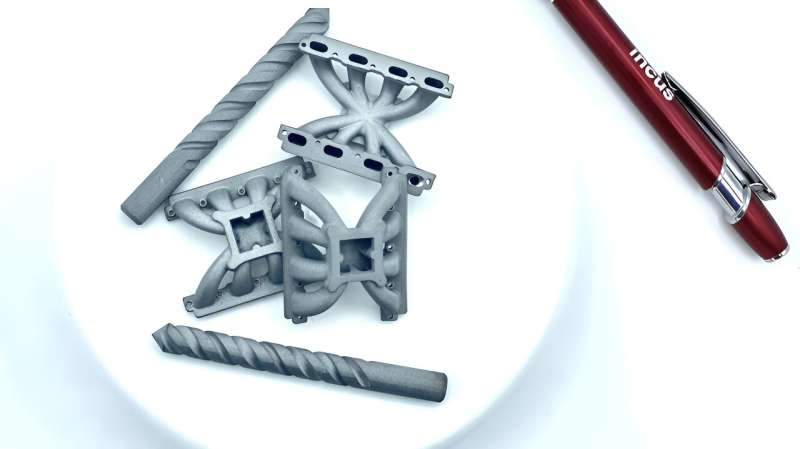So it would probably be better to use the much more straightforward process of recycling existing metal.
At least, that is the thinking underpinning the research done at Incus. The company uses a technique known as lithography-based metal manufacturing (LMM), which combines a metallic powder with a binding agent and then cures the resulting blend using ultraviolet light. Afterward, it is sintered together to make a completed part without all the waste of traditional "subtractive" manufacturing processes.
But on the moon, that process has an added challenge. As with all other competing processes, it has to deal with that most annoying of lunar substances—dust. Lunar dust is notorious for the problems it causes, and those problems extend to becoming ingrained in manufacturing processes like LMM. With too high of a dust concentration, the curing and binding don't work, and the metal parts that are being printed literally crumble back to dust.
This is particularly acute for recycling projects that would utilize metal from things like rovers and solar panels that would have been exposed to lunar dust for a significant amount of time. It would be impractical to clean them thoroughly before recycling them, mainly because of how notoriously sticky lunar dust can be. So, for processes like LMM, which ideally use powder from recycled parts on the moon, there is a high likelihood of a significant fraction of lunar dust, rather than just metal, in that powder feedstock.
Incus set about trying to understand how much of a problem that was. Their ESA-sponsored research used both new and recycled titanium combined with a mix of different percentages of lunar dust. Titanium might be an expensive material here on Earth, but it will be even more valuable on the moon, as well as relatively common given its ubiquitous use in aerospace components. But how would it react to being reprinted into a part if its powder was integrated with up to 10% lunar dust?
Surprisingly well, in fact. Although high concentrations of lunar dust powder could affect the viscosity of the printed metal parts, varying the binder-to-powder ratio could ensure the parts would meet the same porosity standards as would be possible with injection molding processes back here on Earth.
That's not to say LMM is ready for prime time on the moon. Work remains for other types of material printing, such as iron/steel, and whether even higher concentrations of lunar dust might force a sort of filtration process before the metal can be recycled. ESA seems keen on continuing its support, so we might see more results from Incus and its partners soon.
Provided by Universe Today



